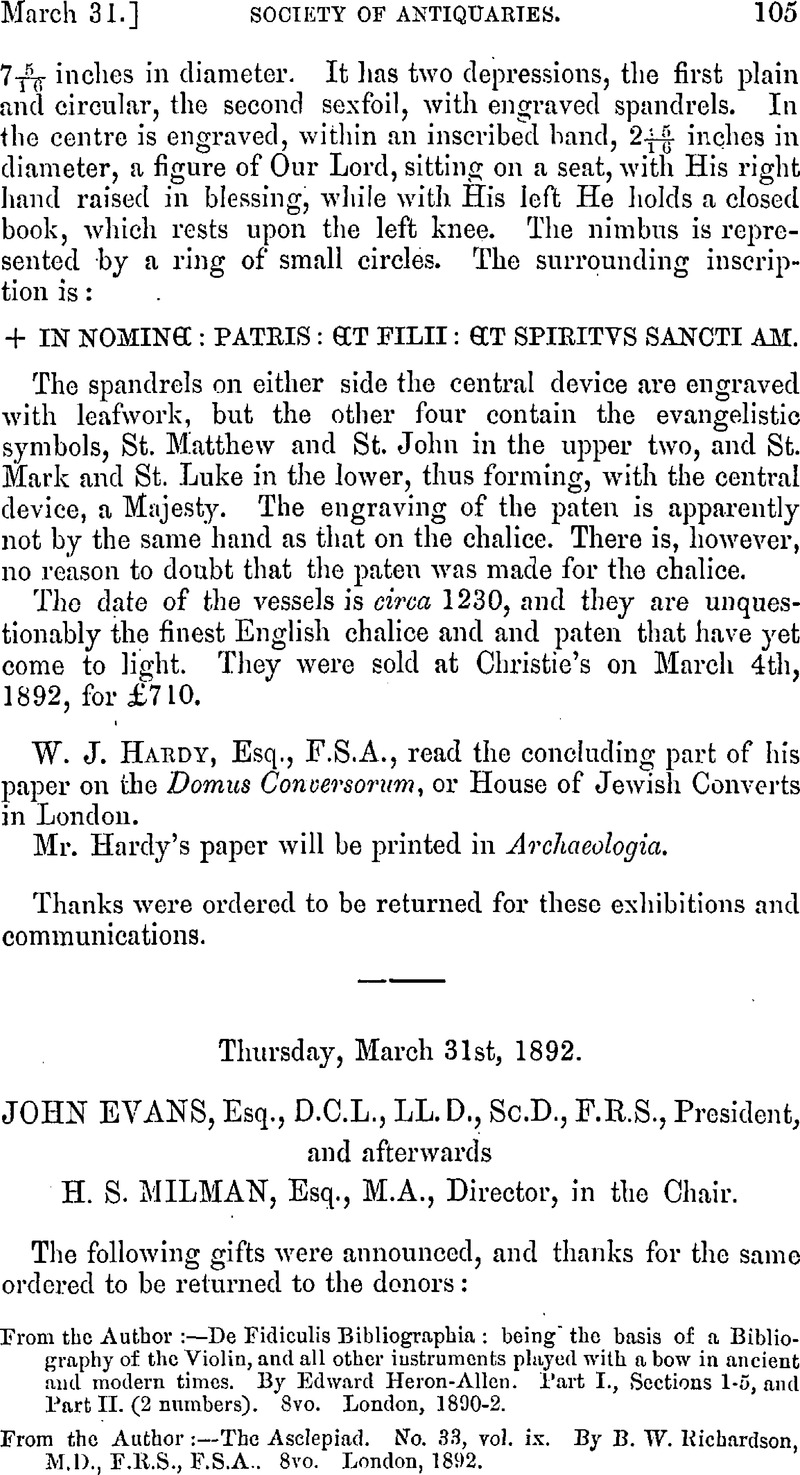No CrossRef data available.
Published online by Cambridge University Press: 10 May 2010

page 109 note * See the names in D'Arbois de Jubainville Noms gaulois chez César (pp. 122–127). I may add that, so far as I can learn by inquiry, there seems no better chance of connecting Medocius with any non-Keltic language.
page 109 note † Mr. Whitley Stokes has since suggested to me that Medocius and Medogenus may bo connected with a Welsh word, explained by Davies posse, calere, and'with the Greek μξδων.
page 109 note ‡ As at Rome, Wilmanns 100.
page 110 note * Several of the references I owe to Mr. Whitley Stokes and to the Revue celtique, ix. 30, xi. 353. The Veda Musa oi Gruter, 927, 17, is really Vedia Musa (C. I. L. xii. 4005).
page 111 note * See Mowat, Notice épigrapliique, p. 131, Revue archéologique (2nd series), xiv. 201.
page 111 note † See the Museum Catalogue, ed. 1870, Nos. 580, 601 foll., 651 ; Ephem., vii. 1189. I have seen all these objects myself.
page 112 note * Published by myself, Archaeological Journal, xlvii. 242. Dr. Zangemeister suggested for vassu, vass (a) v=vasa quinque, but very doubtfully.
page 112 note † See Archaeological Review, i. 435–8 ; Pro. Soc. Ant., 2nd S. vii. 92.
page 113 note * Compare a Pampycallo near Tadcaster invented by an antiquary to match the supposed Pompocali of the Ravenna list.
page 113 note † Kemble, Codex Diplomaticus, 314, 1067, and index. Gough has a footnote to Camden's identification, “Edingburne, Wise,” which seems to refer to Francis Wise's Asser., p. 77. If so, it is a mistake. Wise thought Ederington was Eddington in Wilts, and quite properly keeps it distinct from Edingburn, which is another village. Camden, it is to be feared, was not free from the vice of conjecturing, and this is not the first instance of it.
page 115 note * The Sussex castles at Arundel, Bramber, and Lewes are due probably to trade in the harbours afforded by the tidal estuaries, then larger than now. There is no reason for supposing any of the three to have been occupied in Roman times.
page 115 note † The Ravenna geographer probably used a Roman map of the third or fourth century. One cause of error seems to have consisted in reading off the names in order along the map without noting whether the places themselves were similarly situated with respect to the names. Hence, e.g., we may explain the insertion of Lavaris (Lavatrae) between Vinovia and Catabactonium (Cataractonium), in a section which apparently goes from the Wall (Lineoiugla-Linea Valli ?) to York (p. 431). The two parallels from other parts of the lists which Seeck quotes (Notitia, p. 180), namely Ardua and Adron, help very little.